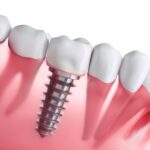Now Reading: 7 Ways to Manage Sore Joints and Muscles Pain Effectively
-
01
7 Ways to Manage Sore Joints and Muscles Pain Effectively

7 Ways to Manage Sore Joints and Muscles Pain Effectively
Effective methods to manage sore joints and muscles pain. Learn practical tips for relieving discomfort and improving your mobility and flexibility. Many people feel sore muscle and joint pain in their joints all the time. They can happen because of exercise, an accident or a health problem. Muscles often get sore after doing a lot of exercise quickly or hard while conditions like arthritis can cause joint pain. Taking care of pain early on can keep it from lasting a long time. To find the right solution it is important to know what caused the problem. The right care can help ease your pain and keep it from getting in the way of your daily life.
Understanding The Causes Of Sore Joints and Muscles Pain
Many things can cause sore muscle and joint pain. A common cause is physical stress. This includes things like running and moving big things. These things can put stress on the joints and muscles. Health problems can also play a role. People with osteoarthritis and rheumatoid arthritis often have pain in their joints. These diseases cause swelling and can hurt cartilage.
Tension, worry or accidents can all cause muscle pain. Soreness can also be caused by not doing anything for a long time. Muscle joint or nerve pain that won’t go away can be caused by inflammation. As a side effect some medicines can make your muscles hurt. To effectively control pain it is important to know what is causing it.
Managing Sore Joints From Physical Exertion
When muscles hurt after working out the best way to deal with the pain is to take care of them and let them heal. Muscles often feel sore after being pushed past their normal limits like after starting a new or very hard exercise routine. Giving your body time to rest is one of the first things you can do to help sore muscles.

This lets the muscles heal and grow back. In the first few days it will help to take short breaks from activities and stay away from hard work. Over the counter painkillers may help briefly ease the pain but they shouldn’t be used regularly because they might have side effects.
Stretching before and after working out can help keep you from getting sore. Stretching gets muscles ready for exercise and helps them cool down afterwards which lowers the risk of getting stiff or hurt. A good warm up before a hard workout makes sure that muscles are ready for the stress and a cool down afterwards helps them heal. Assisting your body to heal itself through easy yoga or light stretching can also help ease muscle tightness.
You can also get relief from sore muscles by applying heat or cold. Putting on a cold towel right after working out can help reduce swelling and ease pain. Heat can be used after the pain has started to go away. A warm bath or heating pad can help loosen up tight muscles and get more blood to the hurt areas which speeds up the healing process.
Staying hydrated is important for muscle healing. Lots of water helps the body get rid of waste and keeps you from getting dehydrated which can make muscle pain worse. Getting enough food is also important for muscle healing. Protein rich foods like chicken fish or plant based proteins help rebuild muscle fibres that get damaged when you work out. Eating foods that reduce inflammation like turmeric ginger and dark veggies can help your body heal faster and reduce swelling.
Managing Joint Pain From Osteoarthritis And Other Conditions
1. Osteoarthritis And Cartilage Breakdown
Joint pain from osteoarthritis and other diseases can make daily life very hard. One common reason is osteoarthritis in which the protected cartilage in the joints goes away. This makes the joints hurt swell and become stiff. Pain in the joints can also be caused by rheumatoid arthritis gout or lupus. Managing this kind of pain requires a mix of techniques, treatments and changes to one lifestyle.
2. Pain Relief Medications
Taking medicine is the first way to deal with sore muscle and joint pain. Non-steroidal anti-inflammatory drugs (NSAIDs) like ibuprofen are often suggested as a way to ease pain and reduce inflammation. In more serious cases doctors may give stronger medicines or steroid shots to help for a short time. These medicines help with pain but they aren’t a lasting fix and you should only take them under the care of a doctor to avoid side effects.
3. Physical Therapy:
Getting physical treatment is an important part of dealing with sore muscle and joint pain. A physical therapist can help you find routines that will improve the muscles around the hurt joint. This will give the joint more support and make it less stressed. These movements can also help you become more mobile and flexible, which can make it easier to do everyday things. Stretching and low-impact workouts like swimming and riding can help keep joints flexible and prevent pain.
4. Orthotics And Support:
Along with physical therapy, orthotic devices such as custom boots or braces can help ease pressure on joints and make it easier to move. Using a cane or walker may help people with knee or hip arthritis by giving them extra support and easing the stress on their joints. Controlling your weight is also an important part of taking care of your joints. Joints that support weight, like the knees, hips, and back, feel more stress when someone is overweight. Even a small amount of weight loss can ease this stress, making joints work better and lessening pain.
5. Weight Management:
When other methods no longer help, surgery may be an option. If osteoarthritis gets bad enough, procedures like knee replacement or surgery may be needed. In joint replacement surgery, which is most often done on the knee or hip, the broken joint is taken out, and a new one is put in its place. People who have a lot of joint pain may find this type of surgery to greatly improve their quality of life.
6. Low-impact Exercise:
Making changes to your lifestyle can also help a lot with sore muscle and joint pain. Eating a healthy, well-balanced meal full of nutrients can help prevent swelling. Fish and flaxseeds, which are high in omega-3 fatty acids, can help reduce inflammation. Flesh and veggie antioxidants also help keep the joints from getting worse. Staying away from foods that cause inflammation, like processed foods and excessive sugar, can assist your joints stay healthy generally.
7. Supplements:
People often take supplements like glucosamine, chondroitin, and collagen to keep their joints healthy. Some studies show that these may help ease the pain of osteoarthritis and make it easier to move your joints. But it’s important to talk to a doctor before taking any new vitamin to make sure it won’t interact badly with other medicines or health problems.
Read Also: Top 5 Gentle Exercises For Osgood Schlatter Disease At Home
Chronic Pain And Inflammation Management
Conditions like fibromyalgia and chronic fatigue syndrome can cause pain that lasts for a long time. These diseases cause pain, tiredness, and soreness all over the body. The exact reason why these diseases happen is not clear. An important part of these diseases, though, is inflammation. Taking care of constant pain requires a mix of treatments. Pain and inflammation can be managed with medicine.
Changing how you live is an important part of controlling your conditions. Even low-impact exercise done regularly can help ease pain. Flare-ups can be avoided by dealing with worry. Less inflammation can be caused by a healthy meal full of vitamins. To deal with persistent pain, you need to get enough sleep. Physical treatment may also help make muscles stronger and make it easier to move around.
Alternative Remedies To Relieve Sore Joints and Muscles Pain
Epsom Salt Bath:
Epsom salt has magnesium in it, which eases muscle tension and lowers swelling. A warm bath with Epsom salt can ease sore and tight muscles, helping you heal faster and rest.
Hot And Cold Compress:
Heat improves blood flow and relaxes muscles. Cold clothes reduce swelling and dull pain. Using hot and cold compresses back and forth can assist in easing pain in muscles and joints.
Gentle Exercise:
Walking, swimming, and yoga are all low-impact workouts that can help your circulation, flexibility, and joint movement. These activities ease pain, keep muscles from getting worse, and improve the health of your muscles and joints as a whole.
Herbal Teas:
Teas produced from ginger, turmeric, or chamomile can help reduce inflammation. They are natural pain relievers that don’t have any side effects and can help ease Sore muscle and joint pain.
Antioxidant-rich Foods:
Berries, leafy greens, and other foods that are high in antioxidants help the body fight inflammation. Regularly eating these foods can help your muscles repair and keep your joints healthy, which can assist you in handling pain and soreness better.
Diet And Supplements For Joint And Muscle Health
What you eat is very important for dealing with sore muscle and joint pain. Antioxidant-rich foods can help prevent swelling. Spices like ginger and turmeric, fruits, and veggies are all good for you. Omega-3 fatty acids, which can be found in flax seeds and fish, can help reduce inflammation. Getting enough calcium and vitamin D in your food is good for your bones.
Foods or pills that are high in collagen can help your joints work better. Proteins found in fish, eggs, and lean foods help muscles heal. The healing of cartilage might be helped by supplements such as glucosamine or SAMe. Pain can be less severe if you take these products on a daily basis. A well-balanced diet and vitamins can do a lot to improve the health of your muscles and joints.
Conclusion
To deal with sore muscle and joint pain, you need to know what’s causing it and do what you need to do to fix it. There are many ways to ease pain, such as rest, medicine, physical treatment, and natural cures. For long-term pain control, it’s important to keep up a healthy lifestyle with normal exercise and a well-balanced diet. It’s important to see a doctor when the pain lasts for a long time or is very bad. If you get an evaluation and care early, you can avoid problems and live a better life. Taking care of pain properly is important for living a busy and healthy life.
















